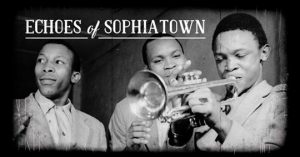how to respond respectfully and educationally?
Definitely address this, as it will have issues later on.
I’d use a friendly, bright and breezy writing style, yet with a core of iron.
eg
Hi [name],
So nice to hear from you. We’d love to teach at [event], and I think [name] and [name] would be a great fit for this class, as they have plenty of teaching experience, and are particularly good with new dancers.
Let me clarify a few of the details:
– the class begins at [time], and the social dancing begins at [time], but and the doors open at [time]
– the venue is [name] at [address]
– both teachers will be given free entry to the social dancing afterwards
– there is now pay available for the teachers (how exciting! This is such a good sign of the success of your hard work!), and it is $X in total.
-> related to the pay, I see that you’ve specified that only the teacher who is leading will be paid, and the teacher who is following will not be paid.
We actually pay all our teachers equally, as we ask our teachers to address leading and following as unique and practical skills in their own right.
Are you ok with both our teachers being paid, and at the rate of $XX each?
Hoping to hear from you soon,
[your name]
I think it’s cool to ask for a particular pay rate for both teachers. I’ve come across this sort of issue in other contexts – eg as a DJ I’ve been offered pay, but not free entry, so I’ve responded with ‘as I’ll be liaising with the band and your staff, preparing beforehand, and bringing my usual equipment, so I see this as a working gig. This means that I’ll be part of your staff, rather than a paying guest.’ etc etc etc.
With this approach, if they want to persist in not paying the woman/follow, they’ll have to say so explicitly, and why. This may force to them to confront their assumptions. It’ll also force them to take a slightly more confrontational approach, and this sort of organiser usually likes to maintain an air of casual hail-fellow-well-met chilllaxedness. You’ll still have the ‘chill’ vibe, but they’ll have to decide whether to stay chill or come across as a bastard. :D
It’s usually a matter of the organiser being inexperienced (as sounds the case in your story), and not really understanding dance event culture. They may be approaching running events as a hobby and assume everyone else does too.
I think it’s really important to address this as early as possible, as this ‘casual hobby’ approach is often used to justify not paying all sorts of people, not having an OH&S policy, not being careful about fire safety, and of course, not being professional about preventing sexual harassment and assault.
-> ie I’ve observed that when an organiser is ‘casual’ about one issue, and exploiting people in one way, they are often ‘casual’ in other areas and exploiting people in other ways. So we see sexual harassment by staff happening at events that are also too casual about pay, about setting definite volunteer shift lengths, etc etc etc.
So your being strict, particularly as a woman (sorry, I’ve just assumed you ID female :D ), will set a very good example. Especially if you are chillaxed, friendly, but firm.
Relatedly, but a bit off track, a lot of church groups with conventional gender roles have a long history of women doing unpaid, unrecognised labour. There’s actually a stack of literature on women’s volunteer work in church groups in Australia and the US :D
So you’ll be dealing with that culture as well as some of the less pleasant elements in the lindy hop world.
Your approach could vary depending on who’s writing the email. eg if it’s a man who’s also a minister (ie in a position of power), and you’re a woman, he may be used to being the higher status, more powerful person in these conversations, so you may need to put a bit of low-key work into presenting yourself as a capable professional in person as well. eg I do stuff like pitch my voice lower, not giggle, I speak calmly and professionally, I initiate conversation and ask questions, rather than waiting to be spoken to in conversations, I offer my hand to shake when we meet, and at subsequent interactions, I try to arrange it so that he seems me managing other people, or working in a professional role with other people.
I dunno if you do this stuff already (sorry if this sounds patronising), but it’s always a good thing to practice. I put a lot of work into my professional role and modes of interaction, and that helps me delineate when I’m ‘working’, and when I’m a punter. Which helps me switch off and have fun when I’m not working :D
I have to continually revisit this stuff. eg I noticed when I was watching telly a little while ago that white American male characters don’t make eye contact while talking. So then I observed white Australian men talking. No eye contact, unless they want to get aggressive. So now when I talk with new male colleagues, I don’t make a lot of eye contact. I also avoid smiling too much – I have a neutral face with a little head tilt that says ‘I’m interested in what you’re saying, but I’m not committing to engagement. Convince me.’
I also stand with my weight event distributed on both feet, I often put one or both hands on my hips, and I square up to a new man and make a solid bit of eye contact when we first meet and shake hands. I always come in first with “Hi, I’m Sam, and I’m your DJ/event manager/MC for tonight.” Then I smile and say something like “Nice to meet you [name].” I think of this as making sure they know that I know who they are.
Then I usually guide the conversation on to the next issue, and keep it professional.
If I’m talking to someone who is my boss, I don’t guide the conversation, unless they’re not covering the issues I need.
It’s all very gendered and I definitely adopt postures and behaviours I think of as masculine. If I’m working with very femme women, I use a different approach.
Basically, I’m learning a lot about body language from my doggo Frank :D


